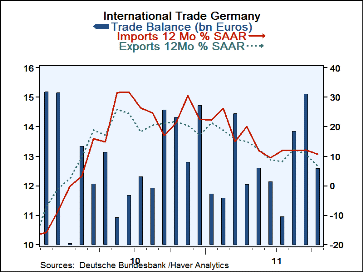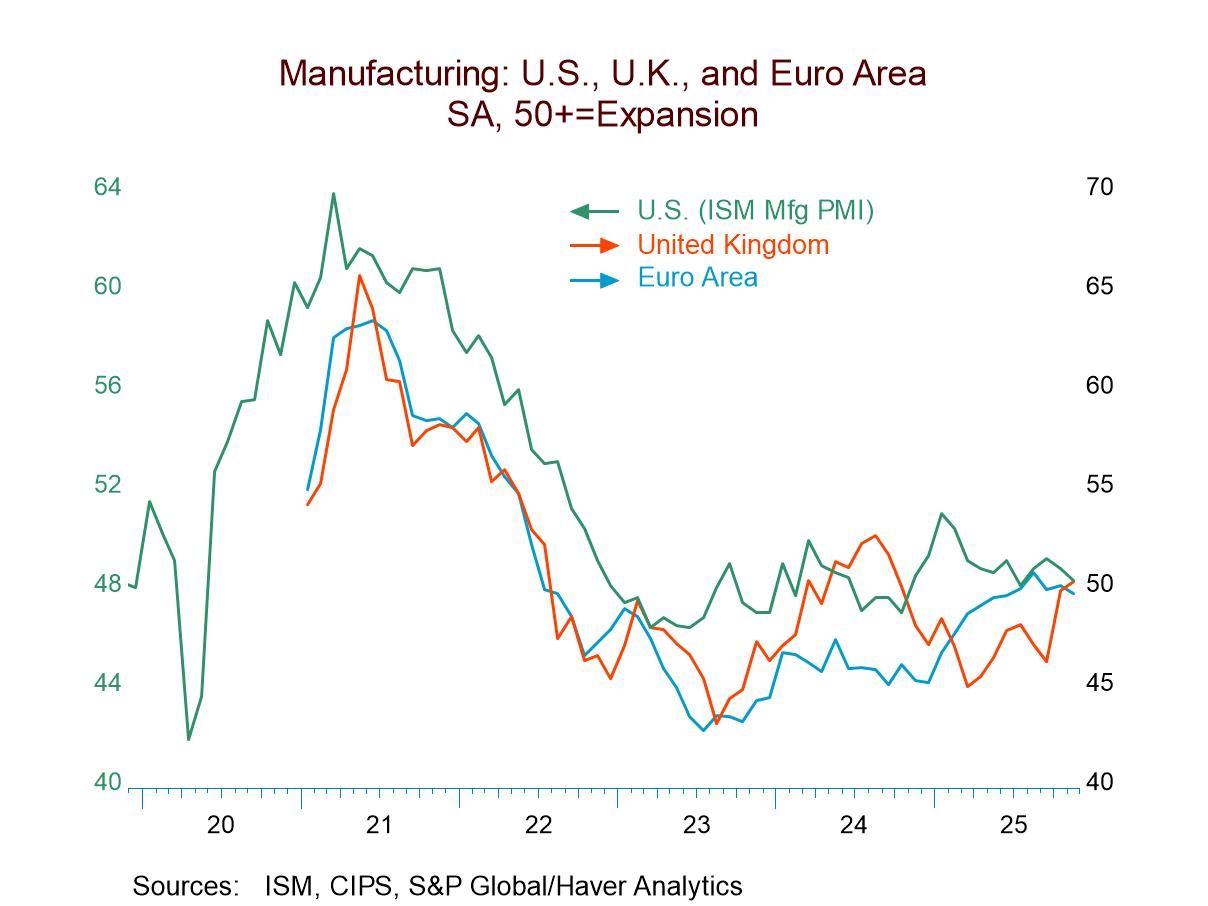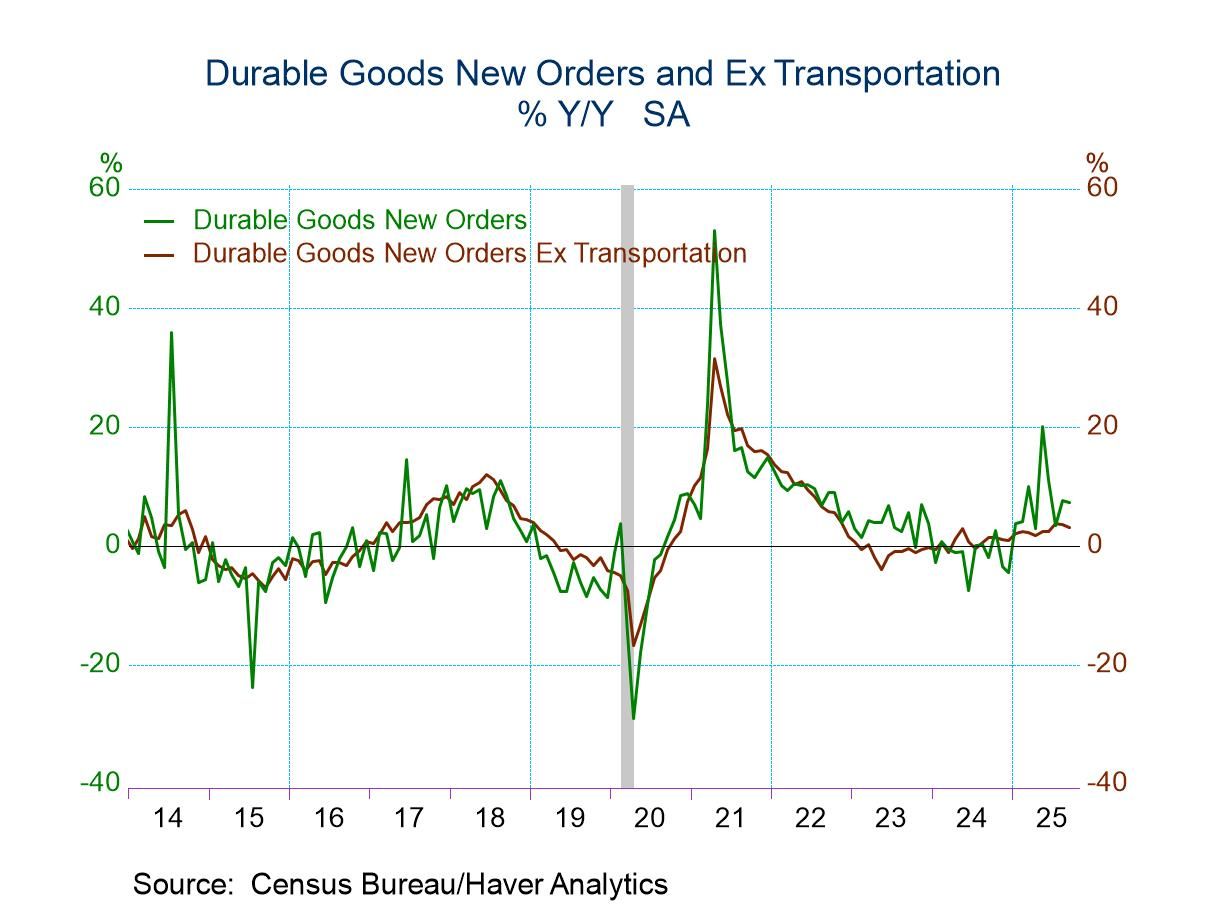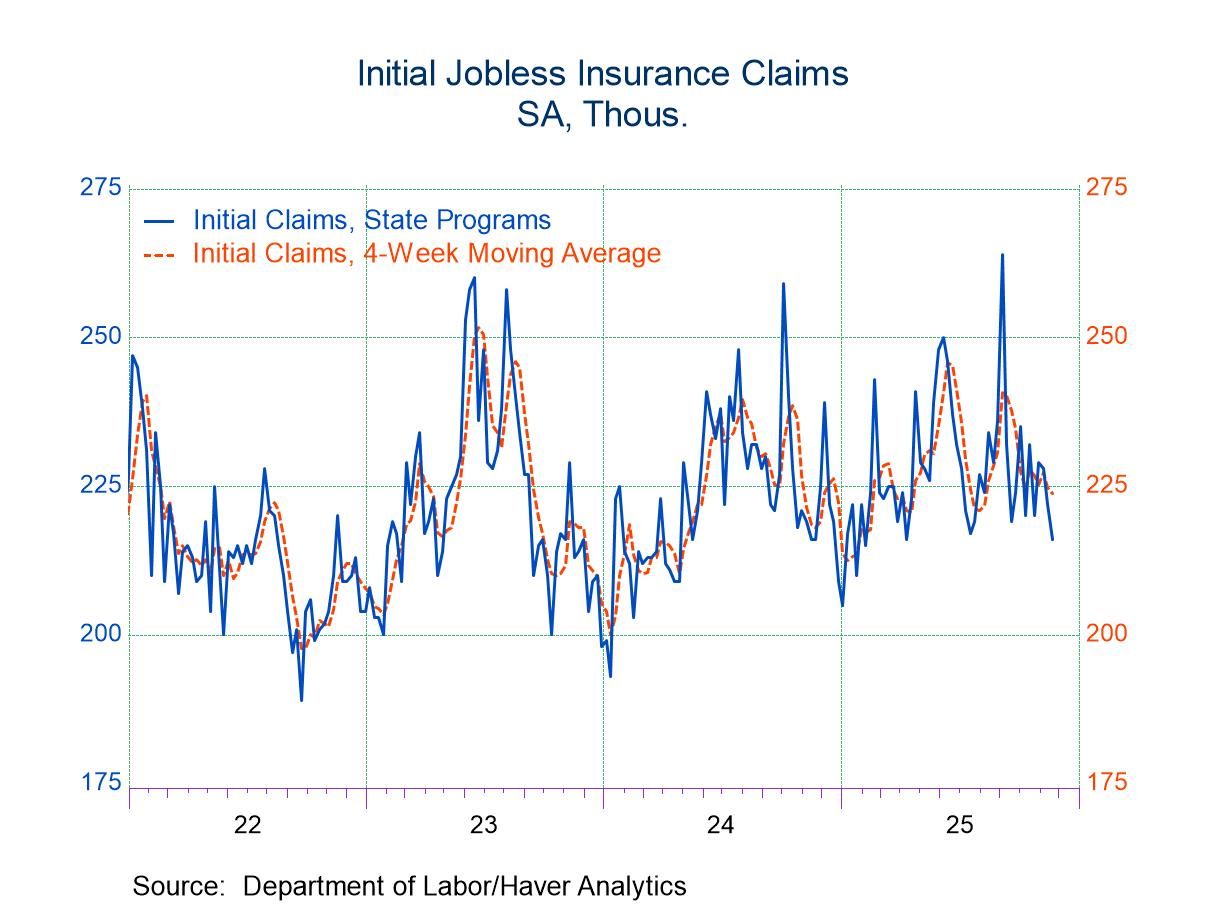 Global| Dec 09 2011
Global| Dec 09 2011German Exports and Import Each Show Withering Trends
Summary
The trends for German trade are pretty clear. Both exports and imports are slowing rapidly. The balance while showing a diminishing surplus, has been largely trendless and volatile since roughly Mid 2009. The ratio of export value to [...]
 The trends for German trade are pretty clear. Both exports and imports are slowing rapidly. The balance while showing a diminishing surplus, has been largely trendless and volatile since roughly Mid 2009.
The trends for German trade are pretty clear. Both exports and imports are slowing rapidly. The balance while showing a diminishing surplus, has been largely trendless and volatile since roughly Mid 2009.
The ratio of export value to import value has been diminishing compared to one year ago and to two years ago. So the nominal trade picture is deteriorating in Germany.
However, the ratio of Real exports to Real Imports has been much more resilient (real data lag one month). The real export to import ratio has risen over that period. So the terms of trade have moved against Germany over the past one and two years. That is export prices have gone up by less than import prices. Much of this is of course the rise in the relative price of energy
But German exports that are showing negative growth rates over three-months in nominal terms are showing strong positive growth rates over three months in real terms. Even over three-months Germany’s export prices are pressured and German exports are fighting their way higher in volume terms on thinner margins. Export orders which are topical through October show a sharp rebound in October after a drop in September making the trend for orders less clear as the three-month trend looks strong again (thorough October) but the six month trend is decidedly weaker at +0.2% at an annual rate. We do not want to place too much weight on three-month trends as they are so volatile.
We can go back and forth on the German data but the clear picture is of some degree of slowing. The volume data lag the nominal data and the nominal data are weaker in the current month so comparing them to one-another may not be so productive. To the extent that volume is holding up in exports by cutting margins it must be strength obtained on borrowed time. However, the problems in the e-Zone are weighing on the Euro and that will breathe some competitiveness back into German exports albeit with much weaker demand all around as global growth is slowing. In the end that is the dominate theme. While the German data show cross currents the most repeated trend is that strength is being undercut for both exports and for imports. Export and domestic order growth has started to sputter to underline that fact.
| German Trade Trends for Goods | |||||||
|---|---|---|---|---|---|---|---|
| M/M% | % SAAR | ||||||
| Oct-11 | Sep-11 | 3M | 6M | 12M | 12MPrev | 2Yr Ago | |
| Balance* | € 12.60 | € 15.12 | € 13.86 | € 12.89 | € 12.90 | € 12.91 | € 10.70 |
| Nominal EXPORTS | |||||||
| Goods Exports | -3.6% | 1.0% | 1.9% | 4.4% | 6.7% | 29.9% | 5.7% |
| Capital gds | -1.3% | 9.5% | -0.4% | 11.0% | 25.9% | -20.9% | |
| Motor Vehicles | -7.7% | 18.9% | 5.5% | 10.2% | 24.5% | -18.9% | |
| Consumer Gds | 2.2% | 10.6% | 6.5% | 11.4% | 11.6% | -16.7% | |
| Nominal IMPORTS | |||||||
| Goods Imports | -1.0% | -0.5% | -6.2% | 3.6% | 10.7% | 34.1% | 11.5% |
| Capital goods | 5.6% | 8.2% | 11.9% | 9.0% | 17.7% | -7.8% | |
| Motor Vehicles | 2.6% | 3.5% | -0.3% | 15.2% | 9.7% | -12.3% | |
| Consumer goods | -5.2% | -4.2% | 11.1% | 17.2% | 5.1% | -12.0% | |
| ratio X:M | 116.7% | 119.8% | 114.3% | 119.2% | 121.4% | 117.4% | 119.6% |
| Real X -orders | 8.3% | -5.8% | 9.5% | 0.2% | 7.9% | 30.7% | 18.3% |
| Real Exports | 1.2% | 8.7% | 1.3% | 5.7% | 17.5% | -14.9% | |
| Real Imports | -0.1% | -4.9% | 1.0% | 4.0% | 8.4% | -7.4% | |
| Real Ratio X:M | 127.3% | 120.6% | 127.2% | 125.3% | 115.7% | 125.8% | |
| *Eur Blns; mo or period average; Shaded area trends lag one Mo | |||||||
Robert Brusca
AuthorMore in Author Profile »Robert A. Brusca is Chief Economist of Fact and Opinion Economics, a consulting firm he founded in Manhattan. He has been an economist on Wall Street for over 25 years. He has visited central banking and large institutional clients in over 30 countries in his career as an economist. Mr. Brusca was a Divisional Research Chief at the Federal Reserve Bank of NY (Chief of the International Financial markets Division), a Fed Watcher at Irving Trust and Chief Economist at Nikko Securities International. He is widely quoted and appears in various media. Mr. Brusca holds an MA and Ph.D. in economics from Michigan State University and a BA in Economics from the University of Michigan. His research pursues his strong interests in non aligned policy economics as well as international economics. FAO Economics’ research targets investors to assist them in making better investment decisions in stocks, bonds and in a variety of international assets. The company does not manage money and has no conflicts in giving economic advice.






